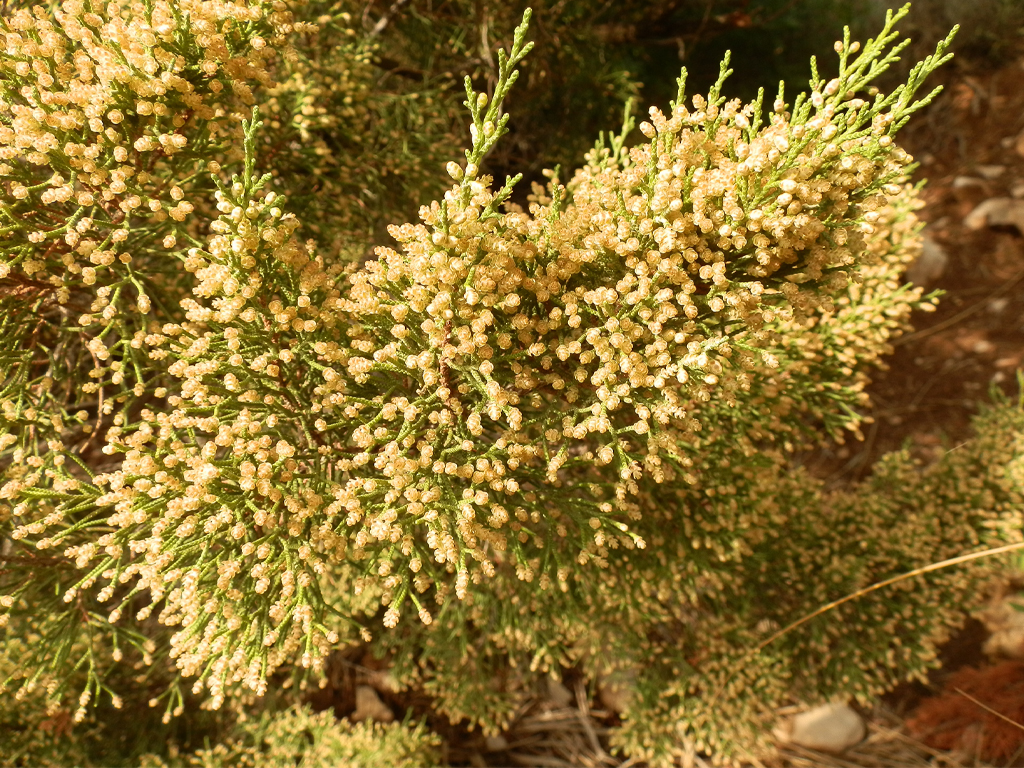
The Phoenician juniper (Juniperus phoenicea) and other junipers found on Elba
In an ideal situation, this small evergreen tree can grow to eight metres tall but, in the challenging, dry conditions of rocky coastal substrates, directly exposed to the winds, it remains the size of a medium-large spreading shrub, or even bonsai size. Its bark peels off in narrow strips, revealing the reddish layer below. Its leaves are very small, scaly and pressed closed to the twigs, which are deep green in colour but not prickly, a characteristic that distinguishes them from those of other junipers.
The foliage of young specimens has a distinctive needle-like structure, although this changes as the young plants grow. The flowers are small, pendulous cones growing on catkins on the young branches. The berry-like fruits, called 'galbuli', are inedible and take two years to ripen. They are rounded, with a diameter of about one centimetre and a woody texture, and turn reddish-brown when ripe.
This heliophilous species dominates maquis shrublands typical of coastal areas, even harsh, rocky ones, and is often found on Elba in places with good southern or western exposure, preferring calcareous soils.
Elba is also home to prickly juniper (Juniperus oxycedrus macrocarpa), a shrub or small tree growing up to 5 metres tall, although smaller specimens are often seen, particularly in rocky locations where it can even be bonsai-size. Its trunk is erect but can be bent over by the prevailing winds on the coasts. Its bark is reddish-grey. It has reddish-brown twigs with pointed glaucous green leaves.
Its flowers are relatively inconspicuous, while its berry-like fruits, or 'galbuli', are clearly visible, initially light green and then opaque and brownish with a diameter of 12-15 mm. This species is typical of the Mediterranean maquis and colonises challenging terrain such as coastal dunes, shorelines and rocky cliffs.
(Antonello Marchese, translation from Italian)

